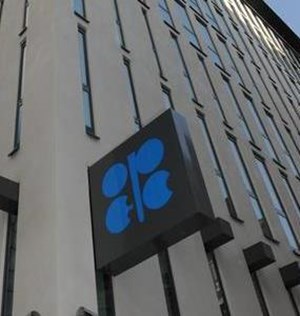OPEC+ expected to extend oil production cuts into next quarter
(Bloomberg) – OPEC+ is expected to continue its current oil production cutbacks into the next quarter in a bid to avert a surplus and prop up prices.
Saudi Arabia and its partners plan to decide early next month whether to extend roughly 2 MMbpd of curbs beyond March. With global demand growth slowing and U.S. crude production climbing, OPEC+ may need to persevere, according to a Bloomberg survey.
Several delegates from OPEC and its allies privately have predicted an extension, which Riyadh has said is manageable.
“They’ll have to extend their cuts,” Bob McNally, president of consultants Rapidan Energy Group and a former White House official, told Bloomberg Television. “Supply is exceeding demand, and to keep prices stable, OPEC+ has to keep that oil off the market.”
Oil prices have held near $80 a barrel this year as swelling supplies from the U.S. and other producers offset both the OPEC+ cuts and fears that conflict in the Middle East could disrupt crude shipments.
Subdued fuel prices could offer relief to major consuming nations like the U.S. and central banks wary of stubborn inflation, but such levels are a little too low for many OPEC+ members. Riyadh needs a price above $90 a barrel as it spends billions on an economic transformation that spans futuristic cities and sports tournaments, according to Fitch Ratings. Its alliance partner, Russia’s President Vladimir Putin, also seeks revenues to continue waging war on Ukraine.
Global oil markets are in surplus, and the overhang would expand considerably if the 22-nation OPEC+ bloc were to restore production, the International Energy Agency in Paris said in a report last week. While global oil demand is forecast to reach a new record of 103 million barrels a day this year, the pace of growth is decelerating sharply, according to the IEA. Consumption will be easily matched by a flood of supplies from the US, Brazil, Canada and Guyana, it forecasts.
Meanwhile China, which has powered demand growth for two decades, has slid into deflation and confronts a myriad of economic challenges in its property and shadow banking sectors.
Fourteen of 17 traders and analysts in the anonymous survey predicted that OPEC+ will stick with its oil production curbs, while the three others forecast they would be eased gradually. Saudi Energy Minister Prince Abdulaziz bin Salman told Bloomberg in December that the measures can “absolutely” be prolonged.
“OPEC+ have no choice but to extend the current cuts in order to avoid a meltdown,” said Tamas Varga, an analyst at brokerage PVM Oil Associates Ltd.
Other analysts see less pressure on the producers, as price differentials for physical crude cargoes strengthen and robust travel in China over the Lunar New Year holiday points to a pick-up in consumer spending.
“The physical markets are telling us that actually markets have tightened,” Amrita Sen, director of research at consultants Energy Aspects Ltd., told Bloomberg Television. “We do believe that OPEC+ will extend its cuts in some form” and then “the surplus does go away.”
In addition to extending the curbs, OPEC+ may need to step up their implementation following a slow start in January.
While Kuwait and Algeria promptly delivered their agreed reductions, Iraq and Kazakhstan — which have a patchy track record on compliance — remained several hundred thousand barrels a day above their quotas. The two countries have promised to improve their performance.
OPEC+ hasn’t scheduled a formal meeting to review the extension, which member governments would likely announce in separate statements on state-run media. The group’s next ministerial conference is set for June 1 at its headquarters in Vienna.



